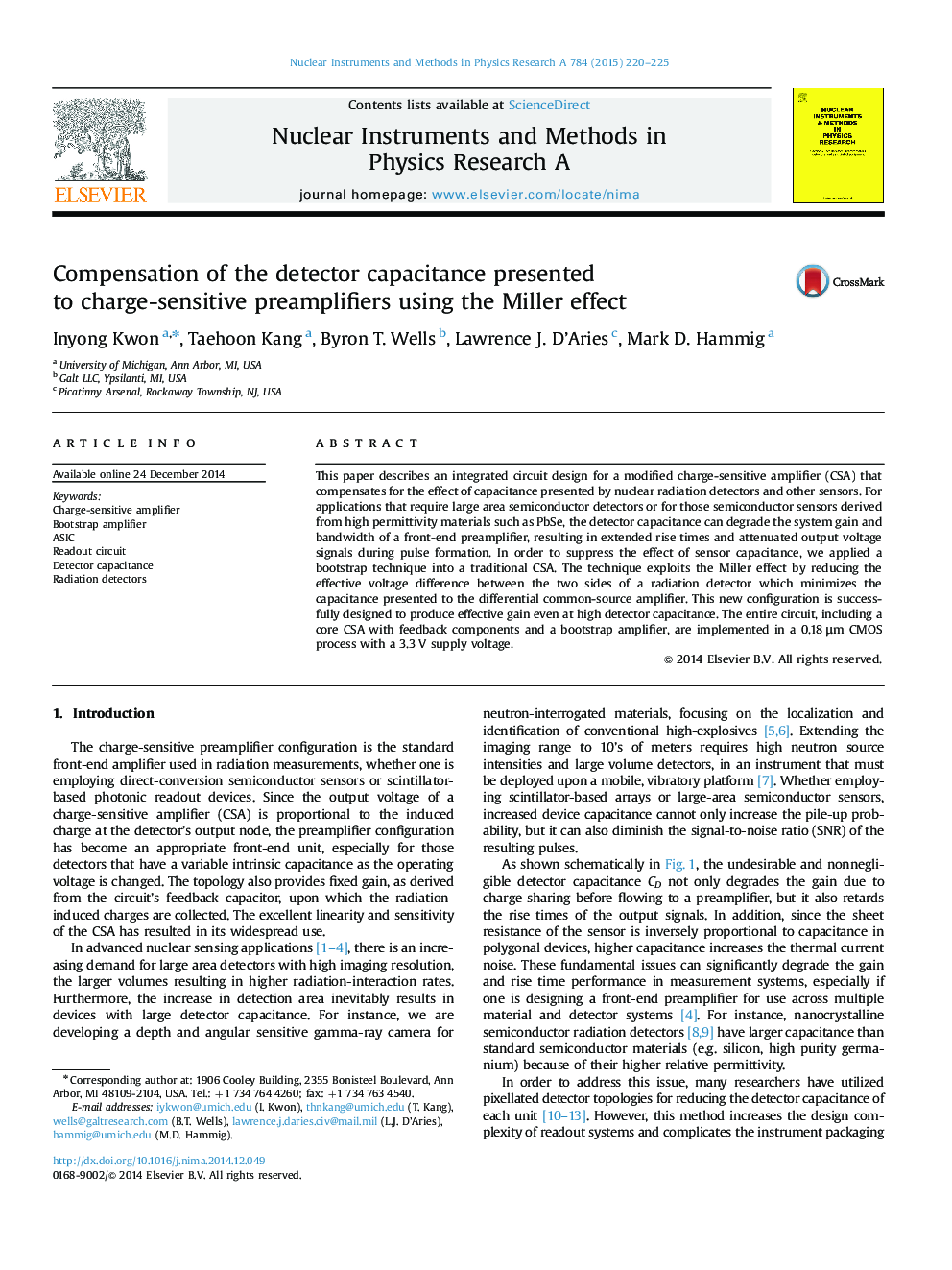| Article ID | Journal | Published Year | Pages | File Type |
|---|---|---|---|---|
| 1822458 | Nuclear Instruments and Methods in Physics Research Section A: Accelerators, Spectrometers, Detectors and Associated Equipment | 2015 | 6 Pages |
•A modified CSA was implemented for detector capacitance compensation.•Increasing detector capacitance degrades gain and rise time.•A bootstrap amplifier exploiting the Miller effect is described.•It allows using large area radiation sensors for high radiation-interaction rates.•Intensive noise analyses show that SNR is much better with the technique.
This paper describes an integrated circuit design for a modified charge-sensitive amplifier (CSA) that compensates for the effect of capacitance presented by nuclear radiation detectors and other sensors. For applications that require large area semiconductor detectors or for those semiconductor sensors derived from high permittivity materials such as PbSe, the detector capacitance can degrade the system gain and bandwidth of a front-end preamplifier, resulting in extended rise times and attenuated output voltage signals during pulse formation. In order to suppress the effect of sensor capacitance, we applied a bootstrap technique into a traditional CSA. The technique exploits the Miller effect by reducing the effective voltage difference between the two sides of a radiation detector which minimizes the capacitance presented to the differential common-source amplifier. This new configuration is successfully designed to produce effective gain even at high detector capacitance. The entire circuit, including a core CSA with feedback components and a bootstrap amplifier, are implemented in a 0.18 μm CMOS process with a 3.3 V supply voltage.
